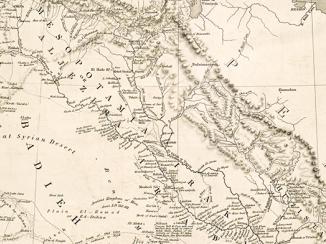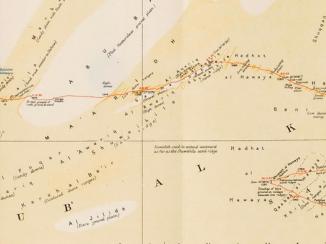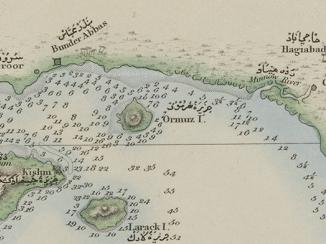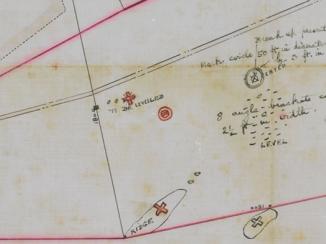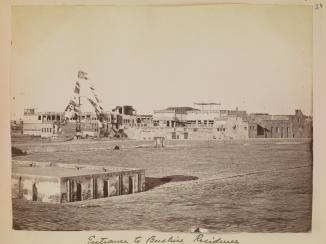Overview
The Political Agency at Kuwait
British links with Kuwait began in 1775 when an alternative trading route was required between Baghdad and the Gulf due to the Persian siege of the port of Basra. Kuwait then retained its position as one of the major ports used by the East India Company after the siege was lifted in 1779. Shaikh Mubarak Al-Sabah, who succeeded to the Shaikhdom of Kuwait in 1896, sought a more formal relationship with Britain. This culminated in the Anglo-Kuwaiti Agreement of 1899, which brought Kuwait under British protection in return for an agreement not to receive representatives from any other Government without British permission. The relationship was formalised further by the establishment of the British Political Agency An office of the East India Company and, later, of the British Raj, headed by an agent. at Kuwait in 1904.
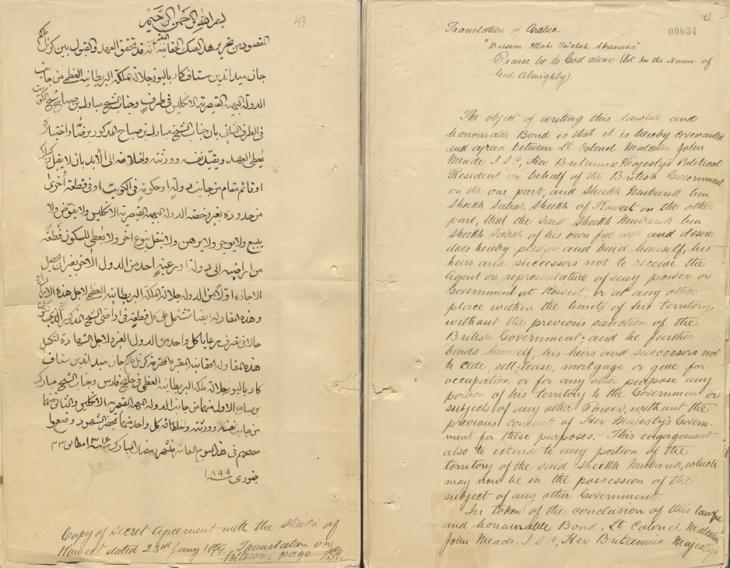
The Political Agent A mid-ranking political representative (equivalent to a Consul) from the diplomatic corps of the Government of India or one of its subordinate provincial governments, in charge of a Political Agency. at Kuwait answered directly to the Political Resident in the Persian Gulf, under the authority of the India Office The department of the British Government to which the Government of India reported between 1858 and 1947. The successor to the Court of Directors. through the Government of India. Authority over the Political Residency An office of the East India Company and, later, of the British Raj, established in the provinces and regions considered part of, or under the influence of, British India. passed to the Colonial Office in 1921 before transferring back to the India Office The department of the British Government to which the Government of India reported between 1858 and 1947. The successor to the Court of Directors. in 1933, but day-to-day responsibility for the Agency An office of the East India Company and, later, of the British Raj, headed by an agent. remained with the Resident throughout. In 1948, the Foreign Office took over the responsibilities of the now defunct India Office The department of the British Government to which the Government of India reported between 1858 and 1947. The successor to the Court of Directors. , including overseeing British policy in the Gulf. The records that now make up the IOR/R/15/5 Series ceased to be produced the following year.
Records in the Series
The records in the Series document the work of the Political Agency An office of the East India Company and, later, of the British Raj, headed by an agent. at Kuwait during the first half of the twentieth century. The Agency An office of the East India Company and, later, of the British Raj, headed by an agent. was a key player in the history and development of Kuwait during this time, which included the First and Second World Wars, the Kuwait-Nejd War, the Uqair Conference, the Saudi blockade of Kuwait, the collapse of the pearl industry, and the discovery of oil.
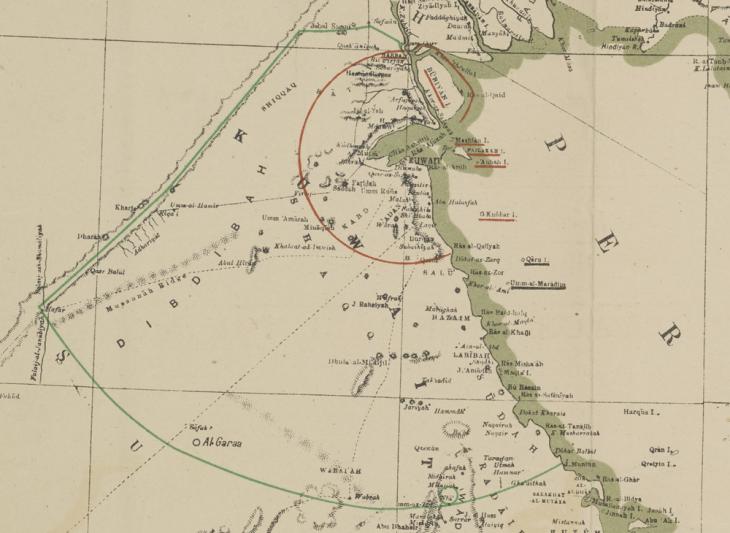
Subjects covered in depth within the series include:
- The administration and staffing of the Agency An office of the East India Company and, later, of the British Raj, headed by an agent. (IOR/R/15/5/1-4, 10-13, 211, 320, 324-327)
- Relations with and events in Iraq, notably in relation to the Shaikh of Kuwait’s date gardens in the Shatt al-Arab (IOR/R/15/5/5-7, 126-127, 136-169, 184-185, 228, 322)
- Relations with and events in Saudi Arabia, and its predecessors, the Kingdom of Hejaz and the Sultanate of Nejd (IOR/R/15/5/24-42, 66-71, 99-125)
- The ruling family of Kuwait (IOR/R/15/5/17-19, 180-183, 194, 200, 217-219, 223-226)
- Legal cases, including the question of jurisdiction over cases involving non-Kuwaitis (IOR/R/15/5/20-23, 87-90, 293-307, 319)
- Smuggling between Kuwait and Iraq, particularly of arms and gold (IOR/R/15/5/45-50, 128-135, 308-310)
- Oil and other natural resources (IOR/R/15/5/236-272)
- Aviation (IOR/R/15/5/273-292).
The Series contains a significant amount of material in Arabic, primarily consisting of correspondence between the Agency An office of the East India Company and, later, of the British Raj, headed by an agent. and the Shaikh of Kuwait, reports and other material supplied to the Agency An office of the East India Company and, later, of the British Raj, headed by an agent. by the Government of Kuwait, and copies of treaties, oil concessions, and other agreements.
Arrangement
The Series contains 397 files and volumes divided over four sub-series, as follows:
- Kuwait Agency An office of the East India Company and, later, of the British Raj, headed by an agent. , First Series, 1904-1929 (IOR/R/15/5/1-108): 108 files and volumes divided into twenty-seven subjects (File 108 is on the QDL as IOR/L/PS/18/B416, files 17, 78 and 98 are not currently on QDL)
- Kuwait Agency An office of the East India Company and, later, of the British Raj, headed by an agent. , Second Series, 1929-1949 (IOR/R/15/5/109-319): 211 files and volumes divided into eleven subjects (Files 116, 261, 296, 298, 300, 311 and 318 are not currently on QDL)
- Kuwait Agency An office of the East India Company and, later, of the British Raj, headed by an agent. , Third Series, 1946-1949 (IOR/R/15/5/320-327): eight files and volumes divided into five subjects
Kuwait Agency An office of the East India Company and, later, of the British Raj, headed by an agent. , Official publications and printed materials, 1829-1940 (IOR/R/15/5/328-398): seventy-one files and volumes made up of Persian Gulf The historical term used to describe the body of water between the Arabian Peninsula and Iran. Administration Reports (IOR/R/15/5/328-364) and miscellaneous printed material (IOR/R/15/5/365-398). Many of these are available on the QDL within other series (see below).
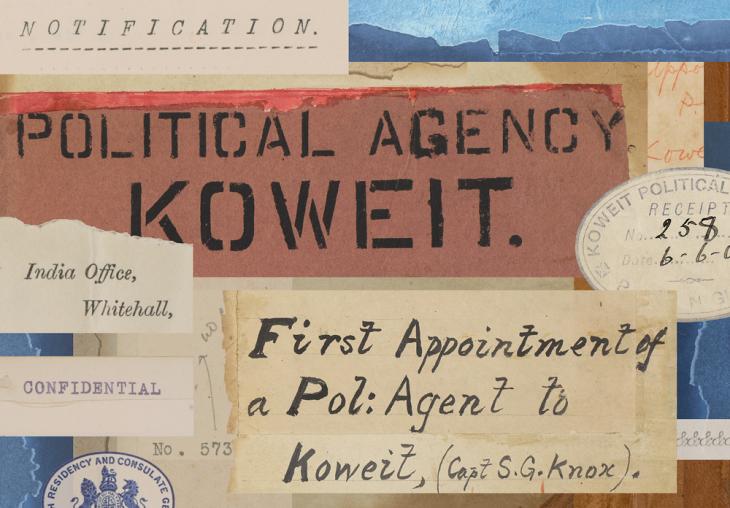
Gaps in the Records
There are sporadic gaps in the Series, apparently due to files and papers being weeded out, although no record survives of when or why this may have happened. This is most apparent in the First Series, which contains some considerable gaps including an unfortunate near-absence of records for the period of 1914-1918. Some files, particularly in the sub-series of official publications and printed materials, have not been digitised for the QDL as they are duplicated elsewhere; this includes the entire set of Persian Gulf The historical term used to describe the body of water between the Arabian Peninsula and Iran. Administration Reports, which are available in a more complete form in IOR/R/15/1/709-721.
